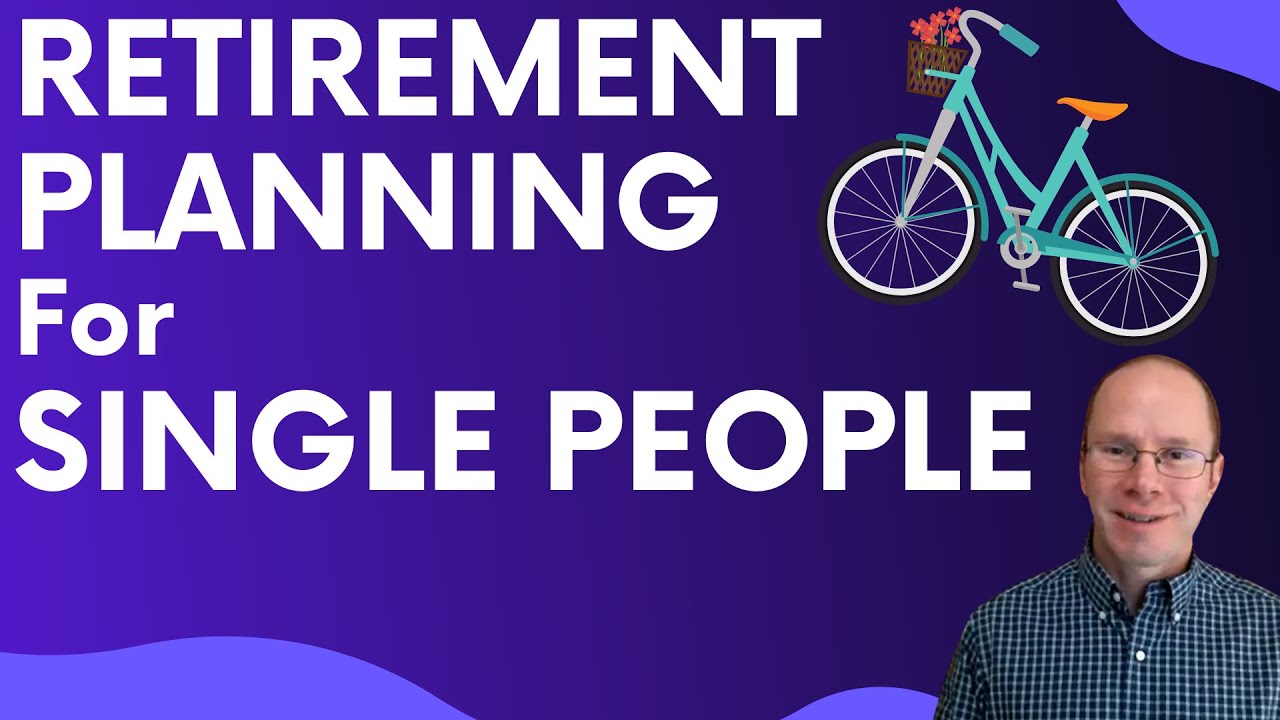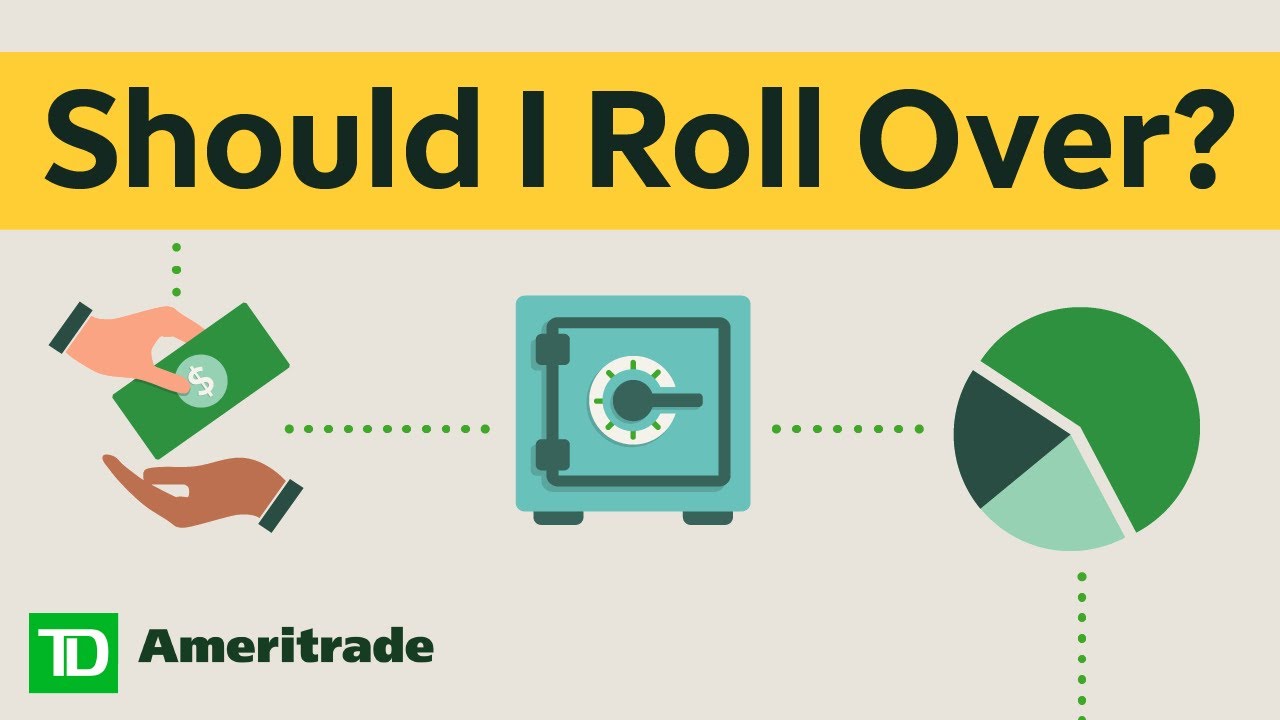Tag: 401k

New IRA & 401K Early Withdrawal Rules Starting in 2023 | Early Retirement Guide
Jason 0 Comments Retire Wealthy Retirement Planning Tips for Retiree's
President Biden just signed a 1.7 trillion dollar government spending bill on December 29th which includes the 53 billion retirement bill that will have a lot of changes starting in 2023 24 and 25. a few weeks ago I did a video on the new 401K perks and Rule changes this video is to focus on the withdrawal rule changes for tax penalties for your IRA and 401K generally speaking if you touch your retirement before you turn 59 and a half there will be a 10 tax penalty and there are already exceptions to the 401k or IRA 10 penalty rule If you experience a significant life event but there are four new rules that I want to make sure that you're aware of however unless it is a matter of life and death I would never recommend or encourage you to make an early withdrawal from your retirement accounts taking money out of your retirement accounts should be your very last resort my wife and I have a fully funded emergency fund that will cover at least six months of expenses if one of us loses job becomes physically incapacitated or has any significant life event and we will always deplete our cash and investment accounts before we touch our retirement accounts because every dollar I withdrawal now will have severe consequences and possibly even delay my retirement but I want I want to make sure you guys are aware of the rule changes so you can educate yourselves about your retirement accounts but anyway I'm gonna put chapters in this video so you can feel free to jump into the video that applies to your financial situation and if you need help with your personal finances like creating a budget or savings plan to achieve your financial Independence you can't schedule a free one-on-one 20-minute Financial coaching session by visiting fivestarchy.com coaching the first provision that got added under secure act 2.0 was a terminal illness and it surprises me that it took Congress this long to waive the 10 penalty for people with terminal illnesses the law defines terminally ill as an illness or physical condition that can be be expected to result in death within 84 months of a doctor's assessment which will be substituted for 24 months so if you haven't reached the regular retirement age of 59 and a half and you're diagnosed with a terminal illness with a qualified physician then the IRS will forgive the 10 penalty but you'll still owe federal and state income taxes this is on page 2280 of the 4100 page Consolidated Appropriations Act of 2023 the next provision they added was to allow domestic abuse victims from a spouse or domestic partner to withdraw up to ten thousand dollars in retirement funds within a year of the incident this rule will take effect in 2024 and I'm not sure why we can't start this now but this is on page 2253 of the spending bill in section 314.

It's up to ten thousand dollars or fifty percent of the present value of the non-forfeitable accrued benefit of the employee under the plan and the one-year period begins on any date on which the individual is a victim of domestic abuse by a spouse or domestic partner the definition of domestic abuse is on page 2254 under subparagraph two now I've seen comments in the in a past video about how stay home spouses or parents can't have any retirement funds as a stay-at-home parent or spouse you can actually set up what's called a spousal Roth IRA if you and your spouse are filing your taxes jointly I did a video on that and I encourage you to share that video with people you know and look if you're a victim of domestic violence or abuse please call the National Domestic Violence Hotline at 1-800-799-7233 people who have physically abuse their spouses or partners are some of the biggest pieces of crap or just scums and I witnessed domestic abuse as a child growing up and no one ever deserves to be abused and you should never be responsible for your partner or spouse's abuse of actions let me move on to the next topic before I get all spun up the next two Provisions are pretty much the same but starting in 2024 you won't get penalized with joining retirement funds for certain emergency expenses and these emergency expenses must be considered unforeseeable or immediate costs related to personal or family emergencies you can withdraw up to one thousand dollars a year and I mentioned that in the 401K video but you're going to be waived to 10 penalty as well you still have to repay the initial distribution of one thousand dollars within three years unless you make regular contributions to your 401k that eventually reach your withdrawal amount and the other one is allowing Americans to withdraw up to twenty two thousand dollars without the 10 penalty in the case of a federally declared disaster so hopefully you don't have to go through this but if you ever experience a loss of Home due to a tornado hurricane or earthquake and need more than what you you're having your emergency fund the 22 000 is taxed as gross income over the next three years instead of one year so instead of being taxed twenty two thousand dollars you could be taxed for just seventy seven thousand three hundred every year for the next three years starting on page uh 2285 of the spending bill it tells you that it needs to be a federally declared disaster so if you had a flood like I did last year for my broken toilet bowl you're not going to be qualified for the special distribution so we came home from a four day vacation to a flood at home because our toilet bowl cracked right down the middle and I will show you the video right here and it took us about four months to completely replace the flooring drywalls and painting and this is why I strongly encourage you to get my financial Independence resources including spreadsheets for savings and Investments for absolutely free by visiting.com contact you can also check out the fire such as shop if you're looking to start your own YouTube channel and I have all of my books and equipment at 5 shopping and here are the existing exceptions to the 10 penalty for those under the age of 59 and a half the first one is using your IRA for higher education expenses the IRS will actually waive your 10 penalty uh if you use your IRA funds to pay qualifying higher education costs for you your spouse your children or even your grandchildren the eligible cost will include tuition fees books and other school or education related expenses and keep in mind that this is for students in a college University or Vocational School in my opinion you should not use your IRA to fund your you or your children's education who have the 529 College savings plan to do exactly that you should treat your IRA as your retirement account right just remember that your children's College will last four years but your retirement is forever the next one is the first time home buyer exemption with your IRA and the definition of a first-time homebuyer is actually someone who hasn't owned a home in the last two tax years you can withdraw up to a lifetime maximum of ten thousand dollars without the ten percent penalty from your IRA and according to the IRS you have to use ten thousand dollars within 120 days of the distribution you can use the money for yourself your spouse or your child if you and your spouse are both first-time homebuyers you can each withdraw up to ten thousand dollars from your IRAs without penalties my advice is not to use your IRA to buy a home because once again you could significantly delay your retirement if you withdraw that ten thousand dollars now the better question is how long will it take you for you to save ten thousand dollars in a high yield savings account the next existing provision is to use your IRA to pay for your health insurance premiums if you lose your job and you have to provide proof of unemployment compensation from the federal or state unemployment program for 12 consecutive weeks you owe also have to make the IRA withdrawal without the 10 penalty within the same year or the following year that you received unemployment compensation and the other waiver is a distribution to cover your medical expenses we all know how broken the U.S Health Care system is but you can't withdraw up to 7.5 percent of your annual adjusted gross income to pay for your unreimbursed medical expenses so for example if you your adjusted gross income was one hundred thousand dollars in 2022 then you can make a withdrawal of up to 7500 to cover your unreimbursed medical expenses if you got your medical statement in 2022 and you didn't make the payment until 2023 it will still count for the 2022 tax year so I just want to make sure you're aware of that the IRA withdrawal will also have to happen in the same year in 2022 to get the penalty waiver and if you just had a baby or adopted a child each parent can actually use up to five thousand dollars per birth or adoption from their retirement accounts the withdrawal just has to be the same year your child was born or the date you legally adopted your child and and the other provision that's been around for a while is waving a 10 penalty for reservists who got orders or called into active duty for at least 180 days if you need to make a withdrawal for some reason you have to provide proof of your military orders and make sure the withdrawal day happens on or after the first date of your orders let me know in the comment section down below if you are a veteran I'm an Air Force veteran myself and I've helped many veterans get out of debt budget and save for their future if you ever have any questions you can always hit me up on Instagram and just say hi on Instagram or go to Fireside chat.com contact to schedule a one-time private coaching session for completely free but if you want to just stay on YouTube and you want to watch more videos about the new 401K rules and how I'm saving to retire early by age 45 be sure to check out these two videos so with that said I appreciate you watch my video don't forget to subscribe and I hope to see you in the next video have a good one [Music] thank you
Read More
Retirement Planning FACTORS | Age and Income
Jason 0 Comments Retire Wealthy Retirement Planning Tips for Retiree's
what to look for when selecting the right
retirement plan so age is a big factor when it comes to deciding which plan is right for you
if you're offered a pension that's fantastic not many companies do offer those nowadays however
if you have the benefit of getting one then yes take it but I also think you should also have a
retirement plan in addition to your pension just to diversify your savings another situation to
consider is your financial situation so someone with a higher income level is most likely going
to want to prefer choosing their own retirement plan because then they're going to be able to
not only write off those contributions but also distribute it later in life so it maximizes their
potential to not incur penalties or other taxable income kind of situations essentially the more
money you make you're looking for more write-offs you're looking to claim less you're looking to
you know have security but you got to be a little more deaf and clever in how you're taking your
distributions so to not trigger taxable events


Retirement: I’m 60 Years Old with $900K in Savings. Can I Retire Now? What is My Risk Capacity?
Jason 0 Comments Retire Wealthy Retirement Planning Tips for Retiree's
so you're 60 years old with nine hundred thousand dollars saved and the question is can you retire in today's video we're going to look at a few different decisions that could be made the impact those decisions have on the plan with the overall goal of not running out of money hi I'm Troy sharp CEO of Oak Harvest Financial Group a certified financial planner professional host of the retirement income show and a certified tax specialist in today's case study we're going to look at a situation that's not too dissimilar from what we normally encounter in our day-to-day operations here at Oak Harvest Financial Group so we have James who's 60 years old he comes in and he says Troy I want to spend about seventy thousand dollars and I'm just tired of working I want to to this year to be my last year so I want to spend seventy thousand dollars I think I'm going to live to about 90 years old pretty good health and I want this fifty thousand dollars to increase with inflation over the course of my retirement but for the first 10 years and what I hear you talk about in this go go spending phase I want to spend an additional 20 000 per year bringing that first 10 years of spending up to 70 000 per year then that go go spending goes away and then we have the inflation adjusted 50 000 to plan for from age 70 to age 90.
Hey just a brief Interruption here to ask you to subscribe to the channel now what that does for you is that puts us Oak Harvest Financial Group and all the content we produce in your little TV Guide so you have a much easier way to come back and find it later share this video with a friend or family member and also comment down below I love to respond to the comments now if you have any questions about your particular situation or you'd like to consider becoming a client of Oak Harvest feel free to reach out to us there's a link in the description below but you can always reach out to us and give us a call and have a conversation to see if we might be a good fit for each other James tells us that since he wants to retire as soon as possible he he thinks it makes sense to take Social Security the first time available so claiming at 62 a little more than two thousand dollars a month at twenty five thousand dollars per year he also has that nine hundred thousand dollars broken out to four 401K money of 700 Grand then 200 000 in a taxable account or what we call non-qualified outside of the retirement account very important to point out here that the tax characteristic of these two accounts and the Investments inside them and the interest and dividends and the withdrawals from them are taxed differently so that's part of an overall tax plan now James also has a home that's completely paid for and worth six hundred thousand dollars but he's told me that I don't want to use this to fund any of my retirement goals I've lived in this home for a long time I want to stay in the home but we know from a planning perspective that we do have that in our back pocket if it's needed down the road so James's total net worth here is about 1.5 million looking at the paid off home of six hundred thousand the 700 Grand inside the 401K and the 200 000 of non-qualified or taxable account assets now as part of the process to understand where someone is and where they're trying to get to we have to understand how is the portfolio currently allocated so James tells us that Troy I know I've wanted to retire so I've been investing aggressively and trying to get ahead of the game but here we are in 2022 and the markets have pulled back some so that double-edged sword is starting to kind of rear its rear its head but we see James's 93 stock so one of the questions that we have from an internal planning perspective is if we keep this same level of risk while we retire and start taking income out of the portfolio what does that do for what we call the risk capacity or the portfolio's ability to take on risk while Distributing income in the retirement phase so we have to look at the guard rails and guard rails are essentially a statistical calculation of probabilities of the portfolio returning this much on the high side and a good year and this much on the downside in a bad year if these guard rails are too far apart and we're taking in income out if we run into a bad couple of years that bump up against that bottom guardrail but we significantly increase the risk of running out of money so part of the analysis of the planning is is this an appropriate guard rail for this type of portfolio given the desired income level so with everything we've looked at so far the question is if James continues doing what he's currently doing and retires with the desired spending level the assets that he's accumulated living until age 90 what is the probability that he has success well it comes in at about 61 so that's probably not a good retirement number it's something we want to see if we can work to improve so I'm going to pull up the what if analysis here and start to look at some of these different decisions that we could make and see if we can get this probability to increase okay so now we have the what if analysis where we have two different columns up here on the board right now they're identical we're going to keep this one the same as the base case everything that we just went through but now we're going to start to change some of these variables to see what the impact those decisions have on the overall retirement plan and this is much more of an art at this stage than it is a science because we want to start to explore different scenarios and then see what is most comfortable for you once you understand the impact of these different decisions you can take some time to kind of way think about them weigh the the pros and cons and now we're starting to work together to craft you a retirement plan that gives us increased probabilities of success but also something that you feel very very comfortable with so the first couple of options we have which are the most simple and usually have the biggest impact on the plan is that we can either work longer or spend less so James says no I don't want to spend less I have a specific plan I want to get my RV I want to travel the country I want to play some golf I've done my budget I need to spend that 70 000 for the first 10 years so the first thing we'll look at is the impact of working another couple of years so I've changed the age here to 63 as far as Retirement the only variable we're going to change at this time I don't want to change too many variables at once I want to see the impact of different decisions how they impact the overall plan okay so that gives us a bit of an increase but the next thing I want to look at here is social security so Social Security is a very valuable source of guaranteed lifetime income first it's an increasing stream of income it increases with inflation but two no matter what happens with the stock market that income is always going to be coming in so instead of taking the 62 and having a significant reduction in the lifetime income that we receive because I don't want to change spending we still have the 50 and 20 in here I want to change the Social Security from taking it a 62 to taking it at full retirement age okay so changing the Social Security election day gets us up to 76 we're definitely moving in the right direction here after a conversation with James and he realizing that you know what I do feel really secure with that increased social security income because if the market doesn't cooperate I know I'm still going to have that much higher income later in life so that would lead us down the road to say okay let's look at adding more guaranteed lifetime income if we can get your Baseline income to cover a majority of your spending needs then we don't need the market to perform necessarily as well later in life so now we want to look at the impact of adding more guaranteed income to the plan which has the effect of providing more security later in life because if the markets don't cooperate we know we have a certain level of income being deposited every single month no matter how long we live so if you go to our website here it's Oak harvestfinancialgroup.com com we have up top an income writer quote where this is constantly searching for the highest amounts of guaranteed lifetime income that are available in the marketplace simply input the variables here so in Texas age 60 Ira money income starts we're going to start looking at seven years here and I know the dollar amount I would want to put in 300 000.
The good news here is you can input any of these different variables we don't ask for your information so it's a calculator tool that you can play with on your own Single Life payout and we get quote okay so here's the output screen we have all of these different companies over here when you see the same company twice it's because that company offers multiple different products with the same income Rider so an income writer is just an addendum or an attachment to a contract that guarantees no matter what the stock market does a certain amount of Lifetime income based on the specifications you input so about thirty three thousand dollars here so that's about 11 percent of the initial deposit with that income starting in year seven this is why we call it a deferred income annuity because it gets a guaranteed growth to calculate a guaranteed lifetime income that you then would incorporate into your plan so in this what-if analysis we come down here we I've already inputted so three hundred thousand dollars and then we just calculate these scenarios okay now we're up to 87 percent here so now things are starting to look a little bit better let's make a couple of different adjustments here because remember when I talked about the guard rails that's too aggressive of a portfolio given the income need especially in the beginning years but now that we've added some deferred income into the plan the portfolio's capacity for risk increases later in life and all that means is because there's so much income coming in the portfolio can withstand a bit more volatility later once Social Security and the Deferred income annuity kick on because you're needing to take less from the portfolio so let's make a couple more adjustments here so after retirement we don't want to keep the the current investment strategy let's get a little bit more conservative here go from an aggressive plan to something a little bit more conservative and then you know what let's also say now that we're starting to move in the right direction instead of retiring at 63 what happens if we retire at 62.
Get your retired one year earlier than some of these other numbers okay now we're at 83 percent retiring at 62. I want to look at one more variable here because you may want to get a part-time job James may want to be a starter at a golf course maybe he wants to work in the church and he can get ten thousand or fifteen thousand dollars a year maybe just wants to work two three months out of the year so the next thing I want to look at is if we've done all this now what happens if during this first 10 years of retirement he decides he wants to work three months out of the year or maybe just a part-time job and work one or two days a week so instead of needing twenty thousand dollars per year we just need another ten thousand let's say from the portfolio so really that's only earning ten thousand dollars extra in retirement income you could do that driving Uber many different choices there you know what I'm just going to decrease this no I'll leave it there now with James deciding to maybe work part-time here to reduce that spending need in the first 10 years let's see if we can also get them retired at 61.

Okay so now James has decided that working part-time and hey we're talking 10 grand here so this isn't a lot of money now I want to see what happens if we go back to the original goal that James had of retiring as soon as possible at age 61. so we're going to change this back to his original goal 61 calculate all scenarios and now this gets us up to 94 so we started at 61 if where James was originally at whenever he came in if he kept doing whatever he was already doing we got him up to 94 percent here okay I want to take a minute before we finish the final Concept in this video to discuss some of the adjustments we've made so far to get James from 61 to 94 so first and foremost we adjusted the Social Security election strategy secondly we added that deferred income annuity thirdly James has decided to work part-time to generate ten thousand dollars per year in those beginning years to help reduce the burden of taking out an additional twenty thousand dollars of retirement income and then finally we've brought the guardrails in on the Investment Portfolio which helps to eliminate very bad outcomes that could happen with his original 93 allocation to stocks we haven't totally went to bonds or cash we've just brought those guard rails in by reducing our Equity exposure in the beginning years of retirement we can always adjust that later now last thing I want to do is look at what we call the combined details all of these things together in a spreadsheet just so we can see how these different pieces are working together and then look at what we call different Monte Carlo analyzes so now I want to share with you some of the individual trial analysis that we run just like we would for a normal client to help identify not only where the weak spots are in the portfolio but how these different decisions that we're making impact the overall client balance and it's not just looking at what we call an average rate of return it's looking at a thousand different simulations we're going to look at a couple here and the Order of the return so check out the video if you want to understand more about this concept you can click the link up above and the title of the video is how eleven percent average returns could destroy your retirement and that'll really get home that concept of it's not about what you average but it's about the order in which you realize returns over the course of your retirement during the day distribution phase so here we have this individual trial and we're gonna it's the median scenario out of a thousand different scenarios so I just want to go through this fairly quickly with you and based on some of the adjustments to the portfolio we see the investment return column here so all of this I think averaged out to I think it was about four and a half percent gross returns I can go back and double check that in a second but you see it's it's never four four four four four four four four or six six six six this is what it looks like in the real world so James retires essentially the beginning of 2023 we have the Deferred income annuity clicking on here we've changed Social Security to click on here so if we add these two together come heck or high water there will be minimally 74 000 almost 75 000 deposited into his bank account every single year now if we look at the retirement need it's about sixty one thousand dollars plus the discretionary Go-Go spending is about twelve thousand two ninety nine so about seventy three thousand dollars but what this does is because we're getting so much from these two sources it really reduces the need for the portfolio to perform and if we kind of go out go on out through retirement you see Social Security isn't increasing income so later in life now we're up to about 89 almost 90 000 of income and our ninety thousand dollars inflation adjusted retirement income need is covered by the amount of guaranteed lifetime income that we have in the portfolio which then allows our portfolio balances to stabilize because we're not needing it to support our lifestyle later in life so this is just one example here but we see the ending portfolio value even though it spends down a little bit in the beginning years okay it starts to stabilize because the income provided from the decisions that we've made put us in a situation where we don't have to withdraw so much from the portfolio Okay so now I want to look at a different trial and just to confirm here the 500th scenario was an average of 4.6 but you saw the different order of those returns and how we actually got to 4.6 okay so if we slide this up here let's assume it's a pretty bad scenario this is going to let me change it here find a worse return okay so this brings the average down to 3.05 and we still see in bar graph form here that the portfolio value still is stabilized and it's primarily because that change in the Social Security decision and adding the Deferred income annuity it still puts us into that position to where if the market doesn't perform we have enough income from guaranteed sources that we're not dependent on the stock market to provide us income in retirement especially later in life when we typically are more conservative and most people that I've worked with don't have the same stomach at 80 or 82 to stay invested in Big Market pullbacks as they did when they were 52 or 62.
Now what I want to show you is the comparison to what we just looked at in the individual trial analysis to the original plan that came in at 61 percent with all the original inputs so if James just wanted to retire not go see anyone make any adjustments I want to show you what that looks like on the individual trial analysis so remember in this scenario we kept Social Security at 62 no job so the spending stayed at seventy thousand twenty thousand was that go go spending no change to the portfolio so we still have the aggressive portfolio which brings in the possibility of some pretty bad outcomes and no deferred income annuity here to help stabilize the income generation later in life as well as the volatility impact on the portfolio so when we when we look at this so here we go um had James has a 900 000.
You see we have none of the annuity income here Social Security starts out at about 26 000 for him a little more than two thousand a month now look at the investment returns here because it's a more aggressive portfolio the range the guard rails are increased here and then finally the spending we have the fifty thousand plus twenty thousand increasing for inflation with the Go-Go lasting 10 years so in the first 10 years of retirement we see things are going pretty well even at this spending level because we have some pretty good returns in here even though we have a couple bad years but what happens is the income because of inflation the income need increases later in life and we see it really just takes a couple of bad years here minus 21 minus 12 we go from a million to 755 and then it's pretty much all downhill from there in this particular scenario running out of income except for Social Security which is now only up to about forty four thousand dollars per year compared to the other plan with the Deferred Social Security so full retirement age and the Deferred income annuity we were at I wanted to say it was around 85 88 000 um of income not dependent on the stock market here we're only at 45 in the mid 80s so that means we have to take more out of the portfolio so it's more susceptible to bad returns later in retirement now the big takeaway here is this is what a good retirement planner does it's not necessarily about the investment returns it's about determining how much money you should have in the market when you should take Social Security we didn't even get into taxes here additional benefits could be provided through tax planning but what you should do with taxes and identifying those spending goals and those needs in order to get you retired and stay retired and then staying connected to this plan over time that's what a good retirement advisor does it's not about outperforming the market it's about finding a plan that gets you and keeps you retired just a brief reminder here to subscribe to the channel now what that does is that puts us in your TV Guide here on YouTube so it doesn't cost anything but if you subscribe to the channel you can come back to us much more easily down the road make sure to comment down below and also share this video with a friend or family member that you think could benefit from what we're talking about today [Music] foreign
Read More
Gold IRA Investing: How To Set Up Your Gold IRA
Jason 0 Comments Retire Wealthy Why Gold IRA
Hi, Doug here from Investing In Gold Advice
dot com. In this short video I'm going to give you
the resources for setting up your Gold IRA very quickly and easily. It continues to amaze me that so few people
realise that they can include physical gold in their retirement plans, and that many of
those who do assume that it will be a complicated and time consuming process. That just isn't the case, and it's for
that reason that I've written a comprehensive report about Gold IRA's which you can download
within the next few minutes completely free of charge.
I've been successfully trading and investing
in gold since 2003 and I created my website Investing In Gold Advice dot com to share
with you the knowledge, experience and contacts that I've gained during that time. Go there now and you can grab my Gold IRA
Report without even having to submit your email or join a mailing list. Once you've downloaded it you will have
instant access to information about what a Gold IRA actually is and what you can include
in it.

It answers the most Frequently Asked Questions
about Gold IRAs. It explains all the benefits to be gained
by including physical gold in your retirement plan. It explains the procedures involved in setting
up a Gold IRA. Actually I do that by giving you a step by step walkthrough of how I set
my own one up. Then finally it shows you how and where you
can get free expert assistance to get started right away with your own Gold IRA, and how
you can save all the initial set up fees.
To get this free report go to Investing In
Gold Advice dot com. Simply click on the link below now..

Retirement: I’m 60 Years Old with $900K in Savings. Can I Retire Now? What is My Risk Capacity?
Jason 0 Comments Retire Wealthy Retirement Planning Tips for Retiree's
so you're 60 years old with nine hundred thousand dollars saved and the question is can you retire in today's video we're going to look at a few different decisions that could be made the impact those decisions have on the plan with the overall goal of not running out of money hi I'm Troy sharp CEO of Oak Harvest Financial Group a certified financial planner professional host of the retirement income show and a certified tax specialist in today's case study we're going to look at a situation that's not too dissimilar from what we normally encounter in our day-to-day operations here at Oak Harvest Financial Group so we have James who's 60 years old he comes in and he says Troy I want to spend about seventy thousand dollars and I'm just tired of working I want to to this year to be my last year so I want to spend seventy thousand dollars I think I'm going to live to about 90 years old pretty good health and I want this fifty thousand dollars to increase with inflation over the course of my retirement but for the first 10 years and what I hear you talk about in this go go spending phase I want to spend an additional 20 000 per year bringing that first 10 years of spending up to 70 000 per year then that go go spending goes away and then we have the inflation adjusted 50 000 to plan for from age 70 to age 90.
Hey just a brief Interruption here to ask you to subscribe to the channel now what that does for you is that puts us Oak Harvest Financial Group and all the content we produce in your little TV Guide so you have a much easier way to come back and find it later share this video with a friend or family member and also comment down below I love to respond to the comments now if you have any questions about your particular situation or you'd like to consider becoming a client of Oak Harvest feel free to reach out to us there's a link in the description below but you can always reach out to us and give us a call and have a conversation to see if we might be a good fit for each other James tells us that since he wants to retire as soon as possible he he thinks it makes sense to take Social Security the first time available so claiming at 62 a little more than two thousand dollars a month at twenty five thousand dollars per year he also has that nine hundred thousand dollars broken out to four 401K money of 700 Grand then 200 000 in a taxable account or what we call non-qualified outside of the retirement account very important to point out here that the tax characteristic of these two accounts and the Investments inside them and the interest and dividends and the withdrawals from them are taxed differently so that's part of an overall tax plan now James also has a home that's completely paid for and worth six hundred thousand dollars but he's told me that I don't want to use this to fund any of my retirement goals I've lived in this home for a long time I want to stay in the home but we know from a planning perspective that we do have that in our back pocket if it's needed down the road so James's total net worth here is about 1.5 million looking at the paid off home of six hundred thousand the 700 Grand inside the 401K and the 200 000 of non-qualified or taxable account assets now as part of the process to understand where someone is and where they're trying to get to we have to understand how is the portfolio currently allocated so James tells us that Troy I know I've wanted to retire so I've been investing aggressively and trying to get ahead of the game but here we are in 2022 and the markets have pulled back some so that double-edged sword is starting to kind of rear its rear its head but we see James's 93 stock so one of the questions that we have from an internal planning perspective is if we keep this same level of risk while we retire and start taking income out of the portfolio what does that do for what we call the risk capacity or the portfolio's ability to take on risk while Distributing income in the retirement phase so we have to look at the guard rails and guard rails are essentially a statistical calculation of probabilities of the portfolio returning this much on the high side and a good year and this much on the downside in a bad year if these guard rails are too far apart and we're taking in income out if we run into a bad couple of years that bump up against that bottom guardrail but we significantly increase the risk of running out of money so part of the analysis of the planning is is this an appropriate guard rail for this type of portfolio given the desired income level so with everything we've looked at so far the question is if James continues doing what he's currently doing and retires with the desired spending level the assets that he's accumulated living until age 90 what is the probability that he has success well it comes in at about 61 so that's probably not a good retirement number it's something we want to see if we can work to improve so I'm going to pull up the what if analysis here and start to look at some of these different decisions that we could make and see if we can get this probability to increase okay so now we have the what if analysis where we have two different columns up here on the board right now they're identical we're going to keep this one the same as the base case everything that we just went through but now we're going to start to change some of these variables to see what the impact those decisions have on the overall retirement plan and this is much more of an art at this stage than it is a science because we want to start to explore different scenarios and then see what is most comfortable for you once you understand the impact of these different decisions you can take some time to kind of way think about them weigh the the pros and cons and now we're starting to work together to craft you a retirement plan that gives us increased probabilities of success but also something that you feel very very comfortable with so the first couple of options we have which are the most simple and usually have the biggest impact on the plan is that we can either work longer or spend less so James says no I don't want to spend less I have a specific plan I want to get my RV I want to travel the country I want to play some golf I've done my budget I need to spend that 70 000 for the first 10 years so the first thing we'll look at is the impact of working another couple of years so I've changed the age here to 63 as far as Retirement the only variable we're going to change at this time I don't want to change too many variables at once I want to see the impact of different decisions how they impact the overall plan okay so that gives us a bit of an increase but the next thing I want to look at here is social security so Social Security is a very valuable source of guaranteed lifetime income first it's an increasing stream of income it increases with inflation but two no matter what happens with the stock market that income is always going to be coming in so instead of taking the 62 and having a significant reduction in the lifetime income that we receive because I don't want to change spending we still have the 50 and 20 in here I want to change the Social Security from taking it a 62 to taking it at full retirement age okay so changing the Social Security election day gets us up to 76 we're definitely moving in the right direction here after a conversation with James and he realizing that you know what I do feel really secure with that increased social security income because if the market doesn't cooperate I know I'm still going to have that much higher income later in life so that would lead us down the road to say okay let's look at adding more guaranteed lifetime income if we can get your Baseline income to cover a majority of your spending needs then we don't need the market to perform necessarily as well later in life so now we want to look at the impact of adding more guaranteed income to the plan which has the effect of providing more security later in life because if the markets don't cooperate we know we have a certain level of income being deposited every single month no matter how long we live so if you go to our website here it's Oak harvestfinancialgroup.com com we have up top an income writer quote where this is constantly searching for the highest amounts of guaranteed lifetime income that are available in the marketplace simply input the variables here so in Texas age 60 Ira money income starts we're going to start looking at seven years here and I know the dollar amount I would want to put in 300 000.
The good news here is you can input any of these different variables we don't ask for your information so it's a calculator tool that you can play with on your own Single Life payout and we get quote okay so here's the output screen we have all of these different companies over here when you see the same company twice it's because that company offers multiple different products with the same income Rider so an income writer is just an addendum or an attachment to a contract that guarantees no matter what the stock market does a certain amount of Lifetime income based on the specifications you input so about thirty three thousand dollars here so that's about 11 percent of the initial deposit with that income starting in year seven this is why we call it a deferred income annuity because it gets a guaranteed growth to calculate a guaranteed lifetime income that you then would incorporate into your plan so in this what-if analysis we come down here we I've already inputted so three hundred thousand dollars and then we just calculate these scenarios okay now we're up to 87 percent here so now things are starting to look a little bit better let's make a couple of different adjustments here because remember when I talked about the guard rails that's too aggressive of a portfolio given the income need especially in the beginning years but now that we've added some deferred income into the plan the portfolio's capacity for risk increases later in life and all that means is because there's so much income coming in the portfolio can withstand a bit more volatility later once Social Security and the Deferred income annuity kick on because you're needing to take less from the portfolio so let's make a couple more adjustments here so after retirement we don't want to keep the the current investment strategy let's get a little bit more conservative here go from an aggressive plan to something a little bit more conservative and then you know what let's also say now that we're starting to move in the right direction instead of retiring at 63 what happens if we retire at 62.
Get your retired one year earlier than some of these other numbers okay now we're at 83 percent retiring at 62. I want to look at one more variable here because you may want to get a part-time job James may want to be a starter at a golf course maybe he wants to work in the church and he can get ten thousand or fifteen thousand dollars a year maybe just wants to work two three months out of the year so the next thing I want to look at is if we've done all this now what happens if during this first 10 years of retirement he decides he wants to work three months out of the year or maybe just a part-time job and work one or two days a week so instead of needing twenty thousand dollars per year we just need another ten thousand let's say from the portfolio so really that's only earning ten thousand dollars extra in retirement income you could do that driving Uber many different choices there you know what I'm just going to decrease this no I'll leave it there now with James deciding to maybe work part-time here to reduce that spending need in the first 10 years let's see if we can also get them retired at 61.

Okay so now James has decided that working part-time and hey we're talking 10 grand here so this isn't a lot of money now I want to see what happens if we go back to the original goal that James had of retiring as soon as possible at age 61. so we're going to change this back to his original goal 61 calculate all scenarios and now this gets us up to 94 so we started at 61 if where James was originally at whenever he came in if he kept doing whatever he was already doing we got him up to 94 percent here okay I want to take a minute before we finish the final Concept in this video to discuss some of the adjustments we've made so far to get James from 61 to 94 so first and foremost we adjusted the Social Security election strategy secondly we added that deferred income annuity thirdly James has decided to work part-time to generate ten thousand dollars per year in those beginning years to help reduce the burden of taking out an additional twenty thousand dollars of retirement income and then finally we've brought the guardrails in on the Investment Portfolio which helps to eliminate very bad outcomes that could happen with his original 93 allocation to stocks we haven't totally went to bonds or cash we've just brought those guard rails in by reducing our Equity exposure in the beginning years of retirement we can always adjust that later now last thing I want to do is look at what we call the combined details all of these things together in a spreadsheet just so we can see how these different pieces are working together and then look at what we call different Monte Carlo analyzes so now I want to share with you some of the individual trial analysis that we run just like we would for a normal client to help identify not only where the weak spots are in the portfolio but how these different decisions that we're making impact the overall client balance and it's not just looking at what we call an average rate of return it's looking at a thousand different simulations we're going to look at a couple here and the Order of the return so check out the video if you want to understand more about this concept you can click the link up above and the title of the video is how eleven percent average returns could destroy your retirement and that'll really get home that concept of it's not about what you average but it's about the order in which you realize returns over the course of your retirement during the day distribution phase so here we have this individual trial and we're gonna it's the median scenario out of a thousand different scenarios so I just want to go through this fairly quickly with you and based on some of the adjustments to the portfolio we see the investment return column here so all of this I think averaged out to I think it was about four and a half percent gross returns I can go back and double check that in a second but you see it's it's never four four four four four four four four or six six six six this is what it looks like in the real world so James retires essentially the beginning of 2023 we have the Deferred income annuity clicking on here we've changed Social Security to click on here so if we add these two together come heck or high water there will be minimally 74 000 almost 75 000 deposited into his bank account every single year now if we look at the retirement need it's about sixty one thousand dollars plus the discretionary Go-Go spending is about twelve thousand two ninety nine so about seventy three thousand dollars but what this does is because we're getting so much from these two sources it really reduces the need for the portfolio to perform and if we kind of go out go on out through retirement you see Social Security isn't increasing income so later in life now we're up to about 89 almost 90 000 of income and our ninety thousand dollars inflation adjusted retirement income need is covered by the amount of guaranteed lifetime income that we have in the portfolio which then allows our portfolio balances to stabilize because we're not needing it to support our lifestyle later in life so this is just one example here but we see the ending portfolio value even though it spends down a little bit in the beginning years okay it starts to stabilize because the income provided from the decisions that we've made put us in a situation where we don't have to withdraw so much from the portfolio Okay so now I want to look at a different trial and just to confirm here the 500th scenario was an average of 4.6 but you saw the different order of those returns and how we actually got to 4.6 okay so if we slide this up here let's assume it's a pretty bad scenario this is going to let me change it here find a worse return okay so this brings the average down to 3.05 and we still see in bar graph form here that the portfolio value still is stabilized and it's primarily because that change in the Social Security decision and adding the Deferred income annuity it still puts us into that position to where if the market doesn't perform we have enough income from guaranteed sources that we're not dependent on the stock market to provide us income in retirement especially later in life when we typically are more conservative and most people that I've worked with don't have the same stomach at 80 or 82 to stay invested in Big Market pullbacks as they did when they were 52 or 62.
Now what I want to show you is the comparison to what we just looked at in the individual trial analysis to the original plan that came in at 61 percent with all the original inputs so if James just wanted to retire not go see anyone make any adjustments I want to show you what that looks like on the individual trial analysis so remember in this scenario we kept Social Security at 62 no job so the spending stayed at seventy thousand twenty thousand was that go go spending no change to the portfolio so we still have the aggressive portfolio which brings in the possibility of some pretty bad outcomes and no deferred income annuity here to help stabilize the income generation later in life as well as the volatility impact on the portfolio so when we when we look at this so here we go um had James has a 900 000.
You see we have none of the annuity income here Social Security starts out at about 26 000 for him a little more than two thousand a month now look at the investment returns here because it's a more aggressive portfolio the range the guard rails are increased here and then finally the spending we have the fifty thousand plus twenty thousand increasing for inflation with the Go-Go lasting 10 years so in the first 10 years of retirement we see things are going pretty well even at this spending level because we have some pretty good returns in here even though we have a couple bad years but what happens is the income because of inflation the income need increases later in life and we see it really just takes a couple of bad years here minus 21 minus 12 we go from a million to 755 and then it's pretty much all downhill from there in this particular scenario running out of income except for Social Security which is now only up to about forty four thousand dollars per year compared to the other plan with the Deferred Social Security so full retirement age and the Deferred income annuity we were at I wanted to say it was around 85 88 000 um of income not dependent on the stock market here we're only at 45 in the mid 80s so that means we have to take more out of the portfolio so it's more susceptible to bad returns later in retirement now the big takeaway here is this is what a good retirement planner does it's not necessarily about the investment returns it's about determining how much money you should have in the market when you should take Social Security we didn't even get into taxes here additional benefits could be provided through tax planning but what you should do with taxes and identifying those spending goals and those needs in order to get you retired and stay retired and then staying connected to this plan over time that's what a good retirement advisor does it's not about outperforming the market it's about finding a plan that gets you and keeps you retired just a brief reminder here to subscribe to the channel now what that does is that puts us in your TV Guide here on YouTube so it doesn't cost anything but if you subscribe to the channel you can come back to us much more easily down the road make sure to comment down below and also share this video with a friend or family member that you think could benefit from what we're talking about today [Music] foreign
Read More
9 Ways SECURE 2 0 Will Change Retirement
Jason 0 Comments Retire Wealthy Retirement Planning Tips for Retiree's
hi my name is Jim and I was retired I'm back
from a week down in Florida and I was able to pack some sunshine in my overhead bags I
brought it back for a Super Bowl weekend go Eagles I've been reading a lot about
secure 2.0 that huge retirement bill that was included in the Omnibus Bill passed
at the last moments of the last Congress in this video I'm going to review nine ways secure
2.0 will change your retirement and I'm going to include three for people who are currently
saving for retirement three for those approaching retirement and three more for those like me
who are in retirement stay tuned hey before I begin will you please like And subscribe to this
channel the more likes the more subscriptions the higher this will be in the search results and I
want to share some of the Lessons Learned in my early retirement I'm now in year seven and I'm
a DIY retiree I'm not selling a book or trying to sell you a plan I'm just sharing advice so
please like And subscribe thank you now let's begin with three changes that affect those
who are currently in the workforce saving for retirement now these will phase in over time
as the law goes into effect and as plans change now beginning in 2025 employers must include
an automatic enrollment for new employees in their retirement savings plans those are the
401ks or 403bs it used to be when I was young you had to go and actively enroll
in those plans when you are eligible then they made it easier some plans to enroll and
by 2025 plans must include this option this is the exception for government plans to phase in after
that but mostly more people will have an automatic enrollment starting at three percent and working
its way up to 10 percent now you can always unelect and withdraw from the enrollment
but starting out employees will have to be automatically enrolled in the plans and that
means more people will be saving for retirement the second major change for current workers is
there are many more Roth options now 401K is a pre-tax dollars and you get a tax deduction if you
meet certain thresholds Roth you pay taxes today for the promise of tax-free interest and
withdrawals later in life it's one of the best inventions from a Delaware Senator ever look him
up Roth Last good Senator Delaware probably had so more Roth options are going in for
current employees those employees of small employers who are self-employed people
will have simple and SCP Roth options also more 401ks have Roth components and employees
can elect either tax free Roth in the future by paying taxes now or 401K pre-tax dollars it used
to be that employer contributions the match up to three percent in most cases would go into
the pre-tax dollars and the new law will now allow employers and employees to elect to have
those contributions the match contributions from the employer go into Roth accounts and that
means more Roth dollars for your retirement and it finally one change for those
that are still paying off a student loan employers will be allowed to match student
loan repayments by recognizing those as elective deferrals into their plans now again
that's up to the employer and right now student loan repayments are paused by the presidential
uh executive order and a court challenge so it may work out that in the future if you're paying
back a student loan your employer will match it into your retirement savings speaking of those
student loans and college tuitions there's one other change here in the new law and it relates
to 529 funds the new law allows you to take those excess 529 funds and transfer them with limits
into a Roth IRA for the same beneficiary now the 529 must be in existence for at least 15 years
contributions from the last five years are not eligible and the conversions are actually subject
to the Roth contribution limits so they're limited each year and there's a maximum lifetime limit
of thirty five thousand dollars but again it's a little way of moving anything that's parked into a
529 into your retirement Savings in a Roth account now there's another change for current
employees I want to caution you about that I'm not going to highlight as one of the
great ways this law is changing and that is you'll be able to withdraw from your retirement
plan without a 10 penalty for more reasons it used to be that you had to keep it there
until you were age 59 and a half and there were a few exceptions but that was it if you withdrew
earlier you got a 10 penalty and now there are additional reasons for national natural disasters
health concerns terminal illness domestic abuse personal financial emergencies up to a certain
level now you're allowed to withdraw all the money without the 10 penalty for these cases but
you'll still have to pay ordinary income taxes on those amounts a much better approach is to build
up an emergency fund of your own and don't touch the retirement dollars for these emergencies
now let's move on to three changes for those that are approaching retirement and there are big
changes for these workers number four in the nine ways is catch up contributions for those age
50 and above will now be indexed with inflation beginning in 2024 they were always increased
ever so sporadically by Congress and if you look at a video that I made early in my channel I
highlighted the contribution amounts because I've always believed that adding to those contribution
levels with catch-up contributions after your age 50 is very important pay down debt build up a cash
cushion and max out retirement savings well now that'll be easier to do because those contribution
limits for catch-up will be indexed to inflation now for instance a thousand dollar catch-up
contribution is allowed on IRAs and that dollar figure will go up over time in a 401k
the catch-up contribution is 7 500 and again that will go up over time so that's a big plus for
those that are approaching retirement and want to max out their retirement savings now beginning
in 2025 there will be an additional layer of catch-up contribution for those that are in ages
60 through 63 don't ask me why those numbers in that 64 65 and 66 too but for those people in that
bracket they will be allowed to contribute with a catch-up contribution of ten thousand dollars or
150 percent of the age 50 catch-up limit as that goes up with the index now there's a caution
here and that's number six on the big changes there's a requirement that the catch-up
contributions must go into a Roth account if your salary is more than 145 000 so you and your
tax consultant will have to figure out when those catch up contributions make sense and finally let
me highlight three final reasons of the nine why secure 2.0 will change your retirement and these
apply to those of us who are currently retired and number seven is that we will see later rmd
ages now secure the original act in 2019 raised the rmd age from 70 and a half to 72.
Well secure
2.0 now raises it further based on how old you are for those of us born in the 50s the rmd age
will be 73. if you're born in 1960 or after the rmd age will be 75. so that means
there'll be more wiggle room for planning Roth conversions and tax planning between
retirement and those rmd dates the rmds exist because it's Uncle Sam's way of making
sure tax deferred dollars eventually get taxed there's another little quirk in here about
inheriting a retirement account from your spouse it used to be that if you had inherited an IRA
for instance from your spouse it was rolled into yours and now with these different rmd ages they
added a little wrinkle if the younger spouse dies for instance and she had a r d age of 75 the
older spouse could elect to instead of rolling it into his Ira treat it as if the spouse were
still alive and start taking rmds at the age the spouse would have been 75.

It's a little Quirk and
I don't know who stuck that in a bill but oh well number eight on the changes is a lessening of
the penalty for missing an rmd it used to be if you forgot to make an rmd you were taxed at 50
percent of that rmd level and it went to Uncle Sam now that penalty that excise tax on
a missed rmd will go to 25 percent or 10 if you correct it in a timely manner there's
still some regulations to specify what timely means but overall that means less chance of a very
expensive mistake with your rmds even a 10 penalty is not worth it just plan to take your rmds if
they're required finally number nine secure 2.0 eliminates rmds for Roth 401ks there was a
quirk in the old tax code that an a Roth IRA had no rmds but a Roth 401k did now most people is
simply rolled over the Roth 401k into a Roth IRA before that rmdh and that's what I was planning
to do this law just makes that unnecessary I'll probably go ahead and do it anyway to simplify my
bookkeeping note that that change on Roth 401ks will take place in 2024.
If you're due to
take an rmd for a Roth 401k this year you should probably roll it over before that rmd
age so those are my nine ways that the secure 2.0 will change your retirement now there are
a ton of other changes in fact my eyes were going blurry trying to read all of these things
in the last month I think it's called secure because it's going to secure the jobs of
financial planners tax accountants and IRS agents for quite some time but I'll close with
my standard warning I am not a financial planner I'm just a DIY retiree so please take these as
entertaining ideas from one educated consumer to another always do your own due diligence and
seek out a professional if you need one thanks

Retirement Planning for Singles
Jason 0 Comments Retire Wealthy Retirement Planning Tips for Retiree's
Retirement is a big deal for anybody, and that's especially true for single people who may be retiring with just one income and who may have built up a nest egg solely off their own savings. So, we know that single people can and do retire comfortably. In fact, one quarter of people over age 60 are living alone in their household, and that number is slightly higher for women, and that's, of course, due to women's longevity. So what we're going to talk about here is retirement for single people. First, we'll go over some averages to give you a rough idea of what the landscape looks like for single people, then we'll get into how much money you might need as you go into retirement, then we'll talk about some tips that can help improve the chances of retiring comfortably. Let's start with the average retirement income for single people. So it's $42,000 on average for an individual in retirement, and that comes from the US Census Bureau.
The median is a little bit lower at $27,000. So a friendly reminder of how this works: The median is the middle, so if you line up all of the survey results, people telling you what their income is, for example, that arrow points at the middle observation, which would give us the median down at the bottom. But if we go to the average, that is going to get skewed by, in this case, wealthy people, for example, they have a very high income.
When it comes to Social Security, the average is about $1,500 a month or $18,000 per year.Your level depends, of course on your earnings, if you had higher earnings during your working years, then you tend to potentially have a bigger benefit than that, and it could be lower, and then of course, your claiming age is also an important thing. If you claim early at age 62, you get a reduced benefit. That's likely to bring down the amount you get. Next, we have pensions, some people get an income from a job they worked at. That might be in the public sector as a teacher, a firefighter, that sort of thing, or even in the private sector, you could have a pension from your job, and those incomes just are all over the board, it could be high, it could be low, but these are different sources of income that people might have in retirement. This is just a friendly reminder that this is just one video and it may cover some interesting information, but it's not specific to you so I hope you'll do a lot more research, hopefully check with some professionals and get some individualized advice, and that way you can improve the chances of things going well for you.
So now let's talk about how much you might need as you go into retirement. Unfortunately, there's no single answer on what you need because it depends. So the first step is to figure out what sort of income you're going to need, and I've got other videos on that, I'll put links in the description to get you some more information, but you can look at replacing a portion of your income, or you can just say, I want X amount of dollars per year, or you can go with other approaches, but first we need to know how much income you are hoping for. Next, we tally up your income sources, so that might be some guaranteed income that comes in from Social Security, for example, or from your pension at your workplace, but that forms a base of income and that might or might not cover what you need.
But it gives us a base and then if we need to fill that in, we can supplement withdrawals from your retirement savings, so that might be out of your IRA, your 401, 403, these accounts that you have built up over time can provide supplemental income to help fill the gap between that guaranteed income you get and the amount you actually want to spend. There are a number of ways to figure out how much to withdraw and to set up different strategies, there might be bucking strategies, there might be withdrawal strategies like the 4% rule.
Or if you don't like that, make it the 3% rule to be safer, or take out more if you think that's not enough and you're selling yourself short. Ultimately, there are a number of ways to approach this, so you just pick one that works well for you, and again, I can point you to some resources on figuring that out. And finally, you will want to look at taxes and inflation, so during your retirement years, it's reasonable to assume that prices may increase on many of the things you buy, so we want your income to be able to increase as well, Social Security typically does rise, but maybe not at the same rate as the things you're buying, so your withdrawals may need to account for that.
Plus we've got taxes. You typically will owe taxes if you're taking distributions or you're taking withdrawals from pre tax retirement accounts. If you have a pension that might be taxable as well. We just want to look at all of these things and figure out what your ultimate money left over to spend each month is going to be. For an over simplified example, let's just look at Jane Doe. She's 60 years old, she's single, she wants to retire in about five years, she makes about 80,000 a year and has 700,000.

A lot of people retire with less than that, a lot of people retire with more. I'm going to bring up my financial planning software that I use with clients, and we'll just go over kind of why there's no single answer on how much you need. Now, if you can tell me exactly how long you'll live and what the markets will do and what inflation will look like, we can tell you exactly what you'll need. But there are a lot of unknowns, so a lot of times we start with a probability of success and I'll go over what that means, and then we look at little tweaks and how different changes might affect that probability of success, so working an extra year might bring her from… Let's say 75% to 84% likely to succeed. Now, success and failure are pretty complicated. They don't necessarily mean that you go completely broke, but you may need to make some adjustments, so let's talk about what does the success mean? We, again, cannot predict the future, so we say, Let's look back and say, You get dealt 1,000 hands.
You're playing a game of cards and you get 1,000 hands. Some of those are good and some of those are bad, so the very good ones tend to be up here, near the top. And you actually end up with a lot of money left over. Some of them are not as good and you end up running out of money early. The median is, again, that one that's right in the middle when we line them up in order for best to worst. And so you might say, you're probably not going to get the best, you're probably not going to get the worst, although anything is possible. So that's how we go with this likelihood of success. Now, maybe she doesn't want to work an extra year, so we can look at different ways of accomplishing things here.
By the way, we've built in some long term care in case she does get sick and needs that at the end of life. She's looking to spend about 4,000 a month, that's after some health care costs that are going to inflate each year, and she's saving a decent amount in some 401K and taxable accounts. Let's say she goes ahead and maxes out that Roth, is it going to make a big difference? Not really, 'cause she only has five years left. So what we do here is we start looking at all of these different variables and playing with the pieces and figuring out what does it take to make her successful at her retirement, or at least successful enough that she's comfortable making that transition.
So here are some tips to improve your chances. The first is to plan for long term care. If you're living on your own, you don't have somebody in the house who can help you do things, and it's arguable if even a couple is capable of managing this on their own… I mean, if you think about a couple, is one of the people physically able to move the other person around and do they have the skills to provide health care, and the time and the energy, frankly, to provide all that type of care? So it's important for everybody, but it's especially important for single people to plan for this care. So you can look at getting insurance, you can look at budgeting for some costs, like we showed you in the software, you might want to budget for a much bigger number if you go into memory care or something like that with 24 hour supervision, it can get really expensive quickly.
And you can explore different living arrangements, maybe doing things with friends or certain communities that might be a good fit for you. Next is to avoid leaving money on the table so if you were previously married and your spouse passed away or you've been divorced, you may be eligible for benefits. That's maybe from Social Security, you can potentially get a survivor's benefit, or if you were married for at least 10 years and you've been divorced, you can potentially get spousal benefits on your ex spouse's work record. It's just important to explore all of these to see if there are any resources available for you. Next is to make a plan, and I am of course biased as a financial planner, but I think it is really helpful to go through the process, and the main goal isn't to get a big document that tells you what your financial plan is.
Instead, really, the benefit is going through that process and learning a lot about your finances as you do it, and in that process, you get an idea of what the risks are, how you're doing, you might get confidence and clarity on whether or not you can go ahead and retire, if you should do certain things or not. It's just a very valuable process for a lot of people, but I'll leave that for you to decide.
If you found this video helpful, please leave a quick thumbs up. That gives me feedback that this is something you might enjoy more of, so thanks for watching and take care..
Read More
Should You Roll Over Your 401(k)?
Jason 0 Comments Retire Wealthy Retirement Planning
To roll or not to roll. THAT is the question. Well, that’s the question if you have a
401(k) from a previous employer. If you’ve changed jobs and are wondering
what to do with your 401(k)account, you have four choices: leave it where it is, roll it
into your current employer’s plan, roll it into an IRA, or cash it out. There’s no one right answer for everyone,
but there are a few key considerations that can help you decide: fees, access to your
money, and investment choices.
First up: fees. 401(k) accounts can carry a number of fees,
which differ based on the provider. When it comes to fees, the most important
thing to understand is what you’re paying and whether the features of the plan justify
it. The most common is management fees, which
are associated with the mutual funds or ETFs typically available in retirement accounts.
These are usually expressed as percentages called expense ratios. But there are also plan fees. 401(k)s, for
example, can be loaded with both upfront and hidden costs like admin fees, audit fees,
and asset fees. While these fees can be avoided or reduced
by investing in an IRA, this is not always the case. It’ll ultimately depend on which
brokerage you choose, what funds you invest in, and how often you trade. The thing to keep in mind is while fees can
add up and eat into your retirement savings, it doesn’t mean the cheapest solution is
always the best. Depending on your needs, access to advice, retirement planning tools,
or better investment choices may be worth paying the higher fees.
Another consideration when deciding whether
to roll is when you think you’ll need to access the money. Depending on your age, withdrawal penalties
and conditions may apply. If you think you’ll need to withdraw funds
from your retirement account before the standard 59 ½ age requirement, you might consider
rolling into your current 401(k). Thanks to an IRS rule known as the rule of
55, if you leave a job any time during or after the calendar year in which you turn
55, you can start taking money out of your current 401(k) penalty-free for any reason. Just know the 59½ age requirement still applies
for any money in a previous employer’s 401(k), which means you’ll pay the penalty if you
try to withdraw money early. On top of that, some 401(k)s also allow you
to take out a loan of up to $50,000 from your current account. And you’ll have up to five
years to pay it back. Keep in mind that with an IRA, you can only
withdraw money early for qualified expenses like medical bills and education costs. You
can also withdraw up to $10,000 for a first home purchase. Any other money withdrawn before age 59 ½
must be repaid within 60 days or you’ll face penalties.

While it’s generally best to keep your retirement
savings invested, your unique circumstances may require you to access your money early,
and this may impact your decision about rolling over.
The third factor to consider is the type of investments each account offers. 401(k)s tend to offer a limited number of
investments chosen by a plan administrator, often mutual funds or exchange-traded funds. These choices sometimes come with high fees, but there are some plans that do offer a variety
of low-cost investments as well as investments that may be unavailable elsewhere. IRAs, on the other hand, tend to offer access
to a much wider variety of investment choices, including individual stocks. One more thing regarding investment choices:
did your previous employer issue company stock through your 401(k)? If the answer is yes
and the stock has grown in value, rolling over could mean serious tax ramifications. If this situation applies to you, talk to
a tax professional to make sure you’re not setting yourself up for a tax surprise next
April.
So there you have it fees, access to your
money, and investment choices. These are three of the biggest considerations
when it comes to deciding whether to roll over a 401(k) from a previous employer. The right choice for you depends on your unique
financial situation. A little research now can help ensure you’re able to thrive in
your golden years..

401K Explained in தமிழ் (US Retirement Series – 1)
Jason 0 Comments Retire Wealthy Retirement Planning
This episode and next few episodes are going to be US specific episodes. All these US specific episodes will have US flag in their thumbnails. Indian audience, feel free to skip these episodes and save your time. US folks, there are 2 main retirement plans in USA. 1. 401K and 2. IRA. We will cover more in detail about IRA in another episode. In this episode, we will cover 401K in detail. Hi. My name is Vijay Mohan. You are watching – Investment Insights. 401K is a retirement plan offered thru employer. We will not be able to open a 401K account just by ourself like a brokerage account. We can contribute to a 401K, only if it is offered through our employer. Almost all employers offer 401K plan. Very few small companies do not offer 401K. How much can we contribute to a 401K? Each employee can save up to $20,500 per year.
If husband and wife both are working, both can contribute $20,500 each. People older than 50 can contribute more – $27,000/year. That is called as "Catch up contribution". Other than our contribution to 401K, many employers match up our contribution up to certain percentage. Let's say that an employer is matching up to 7%. If our salary is $100K, 7% of that would be $7,000. Let's say that we are contributing $20,500 to our 401k and maxing it out. Employer would have matched up the first $7,000 of that $20,500 and would have contributed that $7,000 to our 401K. So in total, our contribution $20,500 + employer match up contribution $7,000 = $27,500 would have gone into our 401K account. Employer match of $7,000 would not come under the contribution limit of $20,500. This match is over that contribution limit.
In this employer match, each employer has a catch called "Vesting Schedule". This vesting schedule defines when that extra amount matched up by the employer is going to actually credit in our account. Let's say that an employer has a vesting schedule of 2 years, then in that 2 years, the match up amount contributed by the employer will be in our account, but not vested. That means, if we leave the job within the 2 years of joining, then we will not get that matched up amount. But after 2 years, that matched up amount will be ours totally, even if we leave the job. Also, after that vesting period of 2 years, all money matched up by the employer will be vested (available) to us immediately. That means, there will not be any restriction over the matched up money after passing 2 years. The 2 years I am referring here is just an example. It will be different for every employer. So what is the advantage to us from this 401K? The advantage is, we do not have to pay the tax on the amount we are contributing to 401K.
But we should pay tax on withdrawal after retirement. What? No tax for the contributed money, but taxed on withdrawal? What benefit does that offer to us? Good question. To understand that, we should know about our tax bracket. What we are seeing here is 2022 Married Filing Jointly tax bracket. Let's say that our family income is $120,000. We will come under 22% tax bracket. That does not mean that we will be paying 22% tax for the whole $120,000 we earned. First 20,000 of $120,000 will be taxed at 10%. Next 63,000 will be taxed at 12%. Money earned over that will be taxed at 22% tax. So the 22% tax is charged for the top most dollar we made in that year. This is called as Marginal Tax rate. If we add up all the taxes for individual brackets of 10%, 12% and 22%, that comes out to $17,634. This is 14.7% of our total income $120,000. So actually we are paying only 14.7% of our income as tax. This 14.7% is called "Effective Tax Rate". May confuse between marginal tax rate and effective tax rate. Hope it is clear now. So when we contribute $20,500 to our 401K, it comes out of our top most tax bracket.

That means, the tax we saved from the contribution of $20,500 is 22%. $4510. If we withdraw the same $20,500 after our retirement, the tax rate for that would be 10%. Tax saved for contribution is 22%, while money coming out is taxed at 10%. The difference is 12% in our favor. Or in other words, we save tax in marginal tax rate for contribution and we pay effective tax rate while withdrawal. We all know that effective tax rate will be always lower than the marginal tax rate.
This is first advantage. Let's check out a sample calculation to understand the next advantage. Let's say that our family income is $120,000. Then federal marginal tax rate is 22%. Let's use Illinois state tax rate – 5%. For 401K contribution, not just the federal tax, we don't have to pay the state tax as well. Let's assume that our 401K will be growing at 8% growth rate. We are maxing out our 401K contribution every year by contributing 20,500/year. Tax savings from this contribution is 27%. $5535. We are continuing to do this till our retirement for 25 years. By the end of 25 years, our 401K balance would have reached 1 million 600,000 dollars. The $5535 that we saved every year in tax alone would have grown into $437,000. The absolute tax saved is 5355 * 25 = $138,000. The growth from that savings is approximately $300,000. Or in other words, just because we did not pay (deferred) the tax of $138,000, the extra growth we got from that is $300,000.
The growth of money by deferring (not paying the tax now) the taxes to pay later is called as "Tax deferred Compounding". This tax deferred compounding is 401K's second advantage. For these 2 advantages, we can contribute to 401K. We should. So far we have seen a regular pretax 401K. There are other flavors of 401K like Roth 401K and After tax 401K. We will dig deeper into that in the next episode. Thank You.
Read More


Recent Comments